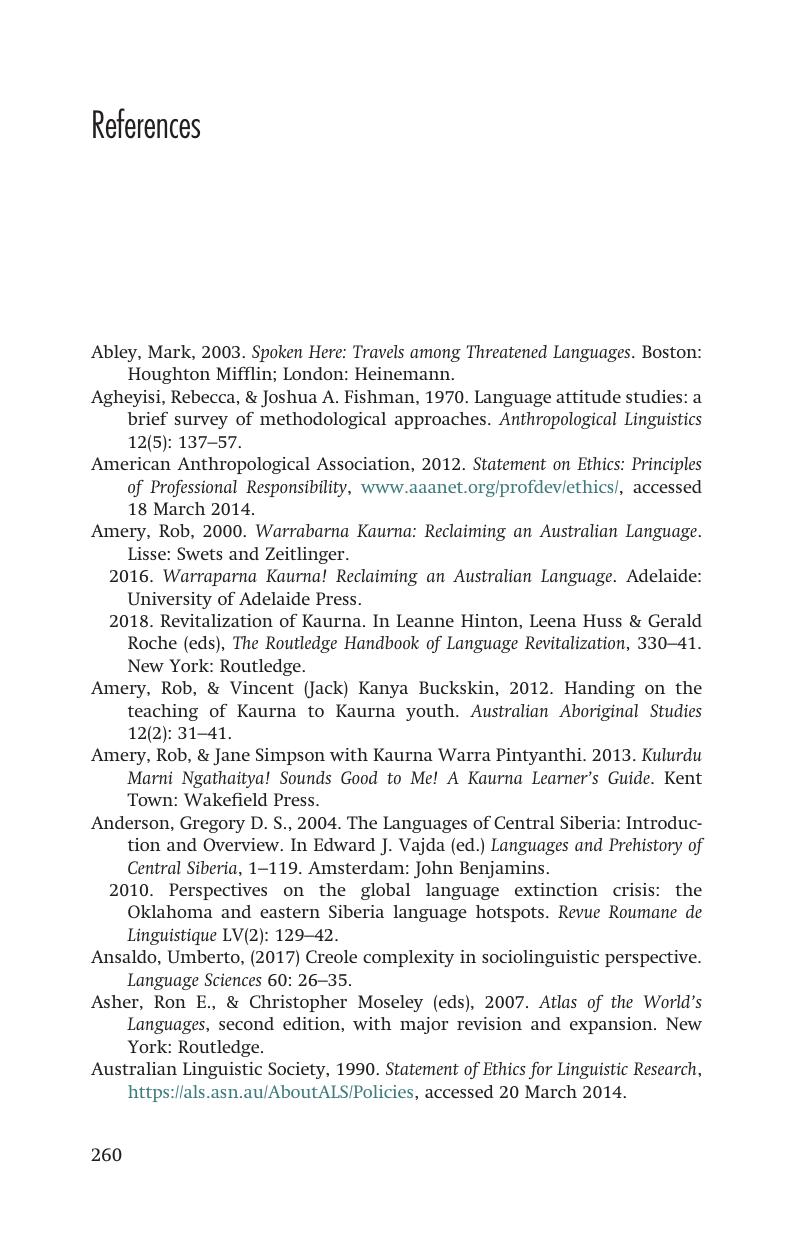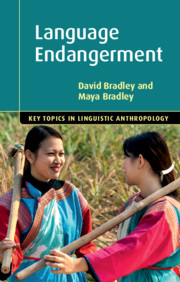Book contents
- Language Endangerment
- Key Topics in Linguistic Anthropology
- Language Endangerment
- Copyright page
- Contents
- Tables
- Acknowledgements
- 1 Introduction
- 2 Stages of Language Endangerment
- 3 Working in a Community
- 4 Identity and Attitudes
- 5 Language Knowledge and Use
- 6 The Sociolinguistic Setting
- 7 Linguistic Processes
- 8 Policy and Planning
- 9 Language Reclamation
- 10 Methodology
- 11 Conclusion
- Glossary of Terms
- References
- Index
- References
References
Published online by Cambridge University Press: 11 November 2019
- Language Endangerment
- Key Topics in Linguistic Anthropology
- Language Endangerment
- Copyright page
- Contents
- Tables
- Acknowledgements
- 1 Introduction
- 2 Stages of Language Endangerment
- 3 Working in a Community
- 4 Identity and Attitudes
- 5 Language Knowledge and Use
- 6 The Sociolinguistic Setting
- 7 Linguistic Processes
- 8 Policy and Planning
- 9 Language Reclamation
- 10 Methodology
- 11 Conclusion
- Glossary of Terms
- References
- Index
- References
Summary

- Type
- Chapter
- Information
- Language Endangerment , pp. 260 - 281Publisher: Cambridge University PressPrint publication year: 2019



